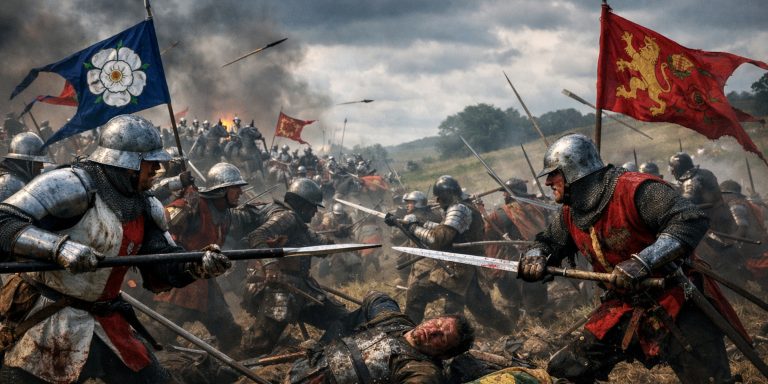
Few figures in English history have commanded as much fascination as Elizabeth I. The last Tudor monarch ruled for nearly half a century, steering England through religious conflict, foreign intrigue, and cultural rebirth. Her reign, often romanticised as the “Golden Age,” wasn’t just glitter and poetry, it was a balancing act of power, survival, and strategy.
A Childhood Framed by Scandal
Elizabeth was born in 1533 to Henry VIII and Anne Boleyn, whose marriage upended England’s relationship with Rome. Her early life was anything but secure. After her mother’s execution, she was declared illegitimate, shuffled between households, and kept under cautious watch. Yet those early years forged her steel. By the time she reached adolescence, Elizabeth had learned to be cautious, intelligent, and measured, a survivor in a court that devoured its own.
A Reluctant Queen
When she took the throne in 1558, Elizabeth inherited a nation fractured by decades of religious turmoil. Her sister Mary I had burned Protestants; her father had severed ties with Rome. Elizabeth’s solution was pragmatic: she established the Church of England under her authority, allowing for Protestant structure but with enough Catholic ritual to calm the restless. It wasn’t perfect, but it worked well enough to stabilise the country.
She never married, despite constant pressure to do so. The idea of the “Virgin Queen” wasn’t just symbolic, it was tactical. Remaining unmarried meant she could rule without a husband overshadowing her or dragging England into foreign alliances she didn’t trust. Suitors came and went, but none outmanoeuvred her.
Power, Plots, and Portraits
Elizabeth’s reign wasn’t short on danger. Catholic conspiracies, assassination attempts, and the looming threat of Mary, Queen of Scots, kept her court on edge. Mary’s eventual execution in 1587 marked a grim but decisive turn. It reinforced Elizabeth’s control, though it also made her more cautious, aware that even a queen could be cornered.
The Spanish Armada followed a year later. Against all odds, England’s smaller navy, driven by clever strategy and a bit of luck with the weather, defeated Spain’s mighty fleet. It wasn’t just a military victory, it was a moment of national identity. The image of Elizabeth in her armour at Tilbury, addressing her troops, sealed her legend.
The Arts and the Age That Bore Her Name
Under her rule, England’s cultural life bloomed. Shakespeare, Marlowe, and Spenser all thrived during her reign, giving rise to a literary legacy still unmatched. The Elizabethan era became a symbol of confidence and creativity, even as poverty, plague, and social unrest simmered beneath the surface. Elizabeth herself understood the power of image. Her portraits were not simple likenesses but propaganda, each pearl, fan, and ruff a coded message about purity, power, and divine right.
The Final Years and End of a Dynasty
Age did not soften Elizabeth’s caution. As trusted advisers died, loneliness and fatigue settled in. She became increasingly isolated, clinging to ceremony and control. In 1603, she died without naming an heir, bringing an end to the Tudor line. Her successor, James VI of Scotland, became James I of England, uniting the crowns and beginning a new era. Yet Elizabeth’s presence lingered. Her reign defined what it meant to be English, resilient, shrewd, and unwilling to yield.
Where to See Her Legacy
You can see Elizabeth’s tomb in Westminster Abbey, a striking monument shared with her half-sister Mary I. The National Portrait Gallery in London holds some of her most iconic portraits, including the “Armada Portrait,” with its defiant symbolism of naval triumph. The Tower of London and Hatfield House both echo with her memory, the former her prison, the latter her refuge.
Reflections
What makes Elizabeth I so enduring isn’t just her political skill or longevity. It’s the way she managed to hold her world together through force of intellect and personality. In a time when women were rarely allowed to lead, she didn’t just rule, she defined an age.
Watch the documentary:



